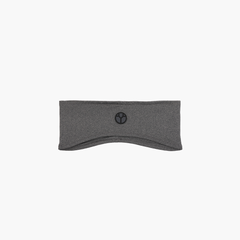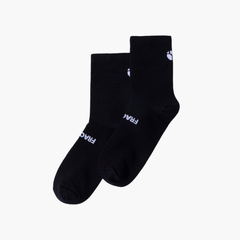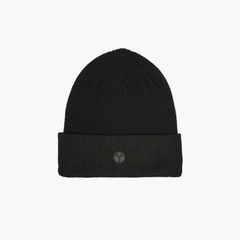FKT - Claire O’Brien-Smith
The Cape to Cape track – navigating a 130-kilometre trail, dodging snakes and trudging through soft sand. A personal challenge and an attempt to break the female Fastest Known Time (FKT).
Words & Images: Claire O'Brien Smith
"When I was fifteen, I was running in the state cross-country championships and was closing in on the finish. I was feeling happy with myself because I was in second place. As I came towards the crowd at the finish line, my coach yelled out that I could catch the runner in front of me. I remember thinking “oh yeah”. It hadn’t occurred to me that I should try to catch her, I was already happy to be placing second. I picked up the pace to a sprint finish and overtook her to win the race. In hindsight, the fact that I didn’t mind about where I placed in the race probably meant I lacked the competitive spirit needed to become an elite runner! These days, ultramarathons suit me perfectly – I’m all for running slowly for many hours through the bush with barely anyone around.

I’ve always been a runner. In my early years, I ran around paddocks on our farm, or chased sheep for kilometres in my work boots. This led to me running more competitively through high school, then progressing to running half marathons in my early twenties. I didn’t need competitions to want to run regularly, it was just part of my lifestyle. I also played basketball, volleyball, surfed, water-skied, mountain biked and did any other sport I could find.
On a stormy day in 2017, I went for a quick surf and had a wipe-out on a very unimpressive wave. I felt the surfboard hit my leg and found a gory, bloody wound. My surfboard fin had sliced deeply through my lower leg. I sat sulking in hospital and mentally pushed surfing down the list of my favourite sports. I had surgery and had a long six weeks on the couch in a moon boot, frustrated at not being able to train and work at my usual pace. I think the universe was forcing me to rest.
When I could walk again, I had a foot drop and severe nerve pain. I wondered how on earth I would get back to trail running, without being able to lift my foot over any obstacles. My career as a physiotherapist in a rehabilitation hospital helped, as I led myself through months of rehab exercises I usually set out for my elderly patients. I decided I wasn’t just going to get back to running, but to run as far as I could, and started looking into ultramarathons. I quickly became hooked.
The Tarawera Ultramarathon in New Zealand was an amazing experience, but I felt 50 kilometres wasn’t enough of a challenge. So the obvious next step was to double the distance. 100 was a nice, round number. I ran the Surf Coast Century (100km) with a knee injury developing half way. My leg gave way under me regularly, so I had to walk down hills and run the uphills, which was humorous. I gritted my teeth in pain the whole way to the finish, as there was no chance I travelled all that way to not complete the whole course. Since then, that run has acted as a benchmark for me; when times are tough, I remind myself that if I could run 50 kilometres with one leg barely functioning, then I can get through whatever the current challenge is.
Surf Coast Century taught me a few things; I’m very stubborn and therefore can persevere (a handy trait in ultramarathon running) and I learnt that my training was totally insufficient. I know I’m the sort of person that needs external accountability to get things done, so I signed up for coaching through Valetudo Health (coach Corrie Johnstone) and love the structure it gives, and that it takes any decision-making away from me.
I learnt about Fastest Known Time attempts (FKTs) in 2019, when my friend Shane Johnstone ran the Cape to Cape track with support in a crazy fast time. He finished with a sprint and some mild delirium and I was so inspired by his effort that I started planning my own attempt.

The Cape to Cape (C2C) track in Western Australia spans from Cape Leeuwin in the south to Cape Naturaliste in the north, hugging the coastline. Most people walk the 130-kilometre track over 5 to 8 days and the usual report is that it was scenic, full of snakes and there was too much soft sand - approximately 20-30km in total, I would guess. I trained along the C2C before the Margaret River Ultra 80-kilometre race in 2020. I ran solo recce runs, battling rain, wind and having panic attacks about snakes. During the actual race I had a much better experience, placing first female after feeling positive and strong the whole way.
On my own Cape to Cape FKT attempt, I stood in the rain at the southernmost lighthouse at 4.30am. I reminded myself that I wanted to do this, and how proud of myself I would be if I completed the track. I know how important it is to plan as much as possible beforehand, so I had made a long planning document so minimal decision-making needed to be done on the day. My coach had given me a pep talk beforehand, telling me about how well I had trained and how much my fitness had improved in one year. I’d even researched psychological strategies to lessen my fear of snakes! So off I ran onto rocky, sandy, undulating terrain, partially lit by an inadequate headtorch. I was thankful for sunrise, as the run felt more normal then.

I had expected to run along on cruise control for the first half, and to battle through the second half. Although, it would have been smug to assume things would go to plan whilst navigating along a partially signposted track for a whole day. It was hard to maintain any running rhythm due to the nature of the course. Nausea and dehydration hit me early, and for many hours I felt unwell and struggled to eat. At 60km, I walked up the Boodjidup Steps with tears in my eyes and tried not to be sick, but also still desperately trying to take in the scenery. I realised that if I didn’t finish the C2C, I knew within myself that I’d come back the following weekend and try again. So, I decided to stop feeling sorry for myself and just hurry up and get on with it.
I focused on the scenery to distract myself, watching surfers being towed into huge waves, passing Conto’s cliffs, Bob’s Hollow and families at Redgate Beach. Each time I reached a spot that resembled civilisation, I was reminded of what normal people did – they relaxed at the beach, surfed, drank coffee. This surprisingly motivated me to keep going, as it reminded me that I didn’t want to be a ‘normal person’, I’d excluded myself from that category by wanting to run for 130-kilometres.
Once I crossed the Margaret Rivermouth, I felt I’d broken the back of the run and it was all downhill from here (metaphorically). By this point it was nearly 30 degrees. My blistered toes were complaining, and I was a slimy mess of sunscreen and sweat and salt. Mentally, I felt great – exuberant, even. It was sunny, the surf was pumping, and I was running along a spectacular coastline. I ignored my legs, they just did their own thing. I played some turbo music and had a lot of caffeine.
I was watching the sun setting, starting to disappear into the ocean as I nearly stepped on a 1.5 metre dugite. Thankfully, its tail was at my feet, rather than its head, and we agreed to part without a venomous exchange. I was too fatigued to be overly anxious about snakes by that point. On went the headtorch, letting out a weaker glow than the morning, and I ran into the night. I felt as though I was flying along the trail, although Strava tells me otherwise. I’d lost track of time and distance after my watch stopped itself (I re-started it) and my brain wasn’t able to compute the numbers. I felt like I sprinted the final 30-kilometres in a daze, wanting to give it everything so I didn’t feel the need to do it again.

I ran through a finish line of balloons and streamers to the cheers from my family and friends at 11pm. I couldn’t believe my final time - 18 hours, 30 minutes, which was enough to break the unsupported FKT, as well as the supported record by an hour. It showed me that when things are physically going wrong, with a bit of mental fortitude, it is possible to turn things around. I liked the style of the FKT attempt, that you are racing against time and seeing how much you can push your limits to lower that time. It felt more personal than a race. The elation I felt during most of the second half of the Cape to Cape track, and the satisfaction I felt at the end was the reason I keep doing ultramarathons."
You can follow Claire on Instagram here








Leave a comment